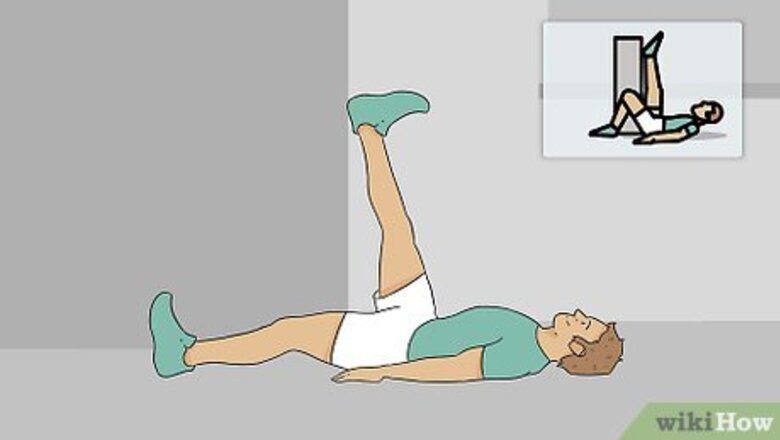
views
- To stretch your hamstrings, lie down on your back with your bottom close to the wall. Pull your legs up against the wall and then flex and straighten your toes.
- Stretch your calves by standing on a step with the heels of your feet hanging off the step. Then, drop your heels down to feel the stretch.
- To stretch your quads, sit on an exercise ball in a lunge position. Extend one leg behind you and the other flat on the ground in front of you.
Floor Exercises to Stretch Your Legs
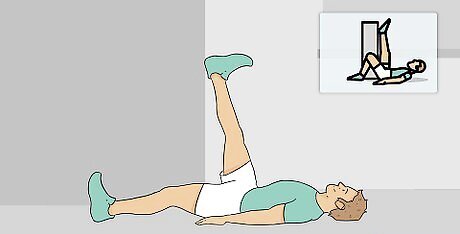
Do a wall hamstring stretch. This stretch puts you in a different position to stretch not only your hamstrings but also the muscles of the calf. Try doing some ankle rotations in this position to stretch and strengthen your ankles. You can also push the soles of your feet against the wall for a stretch in your shins if you're suffering from shin splints. To do this stretch: Lie down on your back on a yoga mat or another supportive surface. Your bum should be as close to the wall as possible. Bring your legs up at a 90-degree angle so that they are perpendicular to the floor. Your hips and legs can rest against the wall. Your arms should be stretched out at the shoulders. Draw your toes down toward you, keeping your legs straight. Try to push your toes back down toward your body. As you do this, you should start to feel the stretch. Hold this position for as long as you can without strain or cramping, or for no more than about 60 seconds. Don't overextend yourself. Slowly, you'll build up your flexibility and stamina.

Do a heel drop using stairs. The heel drop provides an excellent stretch for the calves. To stretch your legs 1 at a time, bend your left leg and place your left foot flat on the upper step. Drop your right heel below the level of the step. Hold this position for about 20-30 seconds. Then, switch sides. You can also perform this exercise on a bench provided that you give yourself something to hold onto. Repeat this exercise 1-3 times for each leg.

Do a quadriceps stretch with an exercise ball. This exercise shows you how to stretch your quads in a lunge position while sitting on the ball. However, you can also rest your hips on the ball, bend one heel toward your butt, and grasp your ankle, pulling your heel close to your butt, to stretch your quads. Repeat the stretch with the opposite leg.
Do a standing quadriceps stretch. This stretch requires you to stand between 2 chairs of the same height. For this stretch, stand in between two sturdy chairs. Place the top of your food on the chair behind you so that it's sitting just above your knee. Keep both hands on the chair in front of you for support. Then, rock your pelvis upward until you feel a stretch in your thigh. As you perform this exercise, engage your abdominal muscles to keep your pelvis squared and to relieve tension on your back muscles. Hold this position for as long as is comfortable, or for 20-30 seconds. Repeat with your other leg. Do this stretch 1-3 times per leg. You can use a pillow or towel to pad the chair behind you if resting your leg directly on the chair back is uncomfortable. EXPERT TIP Eric Christensen, DPT Eric Christensen, DPT Physical Therapist Eric Christensen is a Physical Therapist based in Chandler, Arizona. With over a decade of experience, Eric works in both orthopedic and neurological fields and specializes in custom orthotic prescription and casting, vestibular reprogramming, and manual therapy. He holds a Bachelor’s degree in Exercise Science with a focus in Sports Medicine from Colorado State University and a Doctor of Physical Therapy from Regis University. In practice, Eric takes a developmental approach to rehabilitation utilizing the Selective Functional Movement Assessment. He uses functional movement patterning and manual therapy to return patients to prior levels of function. Eric Christensen, DPT Eric Christensen, DPT Physical Therapist Use proper form to get the most out of thigh stretches. For a good thigh stretch, stand tall, brace your core like you're bracing for a punch, tilt your pelvis forward a bit, then carefully pull one ankle back without bending your back too much. If you can't reach your ankle, rest it on a chair behind you instead while leaning back.
Pilates and Yoga to Stretch Your Legs
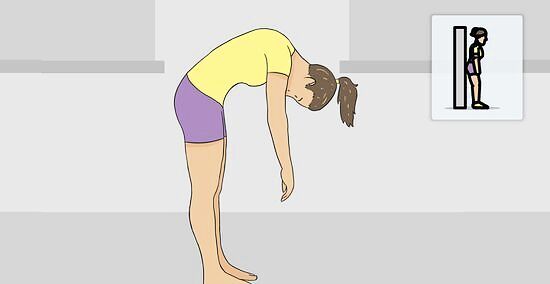
Do the Pilates roll down exercise. The Pilates roll down will stretch your hamstrings and calves while relieving tension in your back. If you need more support, then stand with your back and hips against a wall and with your feet about 6” from the wall. Keep your hips over your feet so that you don't hyperextend your knees, and concentrate on keeping your abdominal muscles scooped and lifted throughout the exercise. Do not attempt this exercise if you have back problems. It compresses the spine and can be painful and dangerous for those with a pre-existing back issue.

Assume the seated forward bend pose in yoga. The seated forward bend is one of the 12 basic positions in hatha yoga. In addition to stretching the hamstrings and calves, this pose will help to relieve the symptoms of sciatica while stretching and lengthening the spine. The pose will also stimulate the solar plexus chakra and improve concentration. Do not attempt this exercise if you have any pre-existing back problems. This exercise compresses the spine, which can lead to pain or injury if you have a known back injury.

Do the revolved head to knee pose in yoga. This stretch will open up the hips, stretch the hamstrings and calves, and deeply stretch the entire side of the body. Start by sitting in the center of your mat with your hands planted flat just a little behind you. Lean back slightly, open your legs as wide as you can, and tuck your left foot toward your right thigh. Then: Slide your right hand down your right leg, palm extended toward your toes. Grab your right foot with your right hand, if you are capable. If not, stretch your hand as far down your leg as it will go, and gently grasp your leg at your stopping point. Reach your left hand over your head and down toward your right foot. Gently and carefully try to turn your head toward the ceiling if you are comfortable doing so. Hold this position for 4-5 deep breaths before slowly letting your left arm go, bringing up your torso, and returning your legs to a neutral position. Repeat with the other leg.
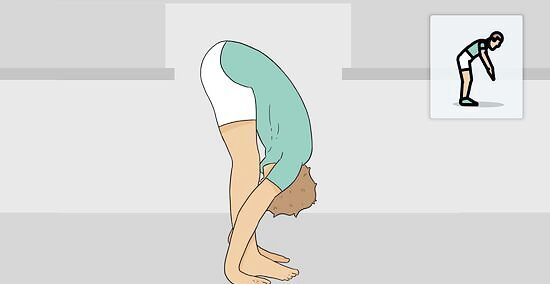
Do the standard forward bend in yoga. This stretch for your hamstrings and calves can be easily modified to match your flexibility level. If you cannot bend all of the way over, then place your hands on a wall in front of you so that your arms are parallel to the floor. If you need more of a challenge, then unfold your arms and grasp your ankles, bringing your head down to meet your knees. Extreme forward flexion such as practiced in this pose is not recommended to anyone with back problems, as it compresses the spine and may cause pain or injury.

Do the cross beam yoga pose. Start by kneeling on your mat, with your upper body long and straight. Stretch your right leg out to the side, keeping your leg in line with your hips. Bring your arms parallel to the floor, level with your shoulders. Then, slide your right hand down toward your ankle, maintaining a side-bend at your waist. Fold your left arm over your right arm, bringing your palms as close together as possible. Hold this stretch for 4-5 deep breaths before repeating on the other side. This pose, also commonly called the “gate pose,” gets its name because your upper body crosses over to resemble the cross beam of a gate. It is an easy pose for those new to yoga.
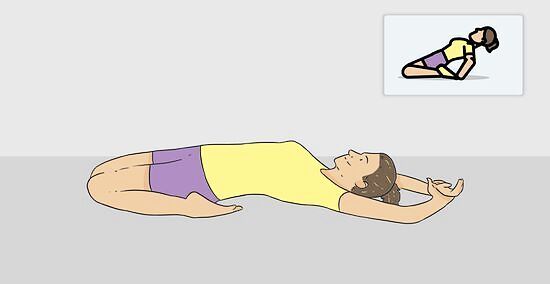
Do a reclining hero pose. To perform this, you will start in the hero pose with your legs tucked behind you, and your bum planted between your heels. Place your palms on your mat just behind your feet, then lean back as far as you can, walking your hands back with you. If you can, lower your body to the ground, using your elbows as support. Hold this pose for 4-5 deep breaths before releasing and using your arms to walk your body back up. If you cannot sit on the floor between your heels, then sit on a yoga block or a pillow so that your knees are comfortably tucked in beside you. You can also place a yoga block or pillow beneath your head and shoulders as you recline if you need more support.
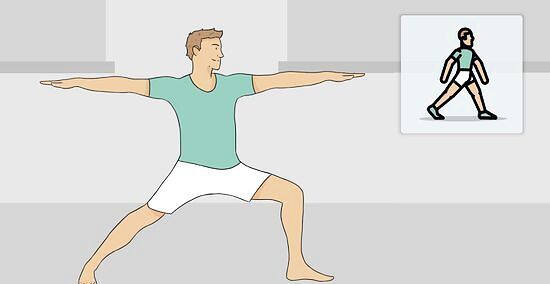
Do the warrior II pose in yoga. With your front leg in the “lunge” position, raise your arms out to shoulder level, keeping them parallel with your legs and the floor. Turn your head to face your front arm, exhale, and push as deep into your lunge as you can. Hold this pose for 4-5 deep breaths before releasing the bend in your forward knee and coming back to a neutral position. Then, repeat this stretch on the other leg. The warrior II pose will stretch your inner thighs.

Do the butterfly pose. Sit upright on your mat with your legs extended in front of you. Slowly and gently bring each foot in as close to your groin area as possible. Once your feet are tucked, relax your knees and let them drop toward the mat. If you need additional stretch, try leaning forward at the waist toward your feet.




















Comments
0 comment